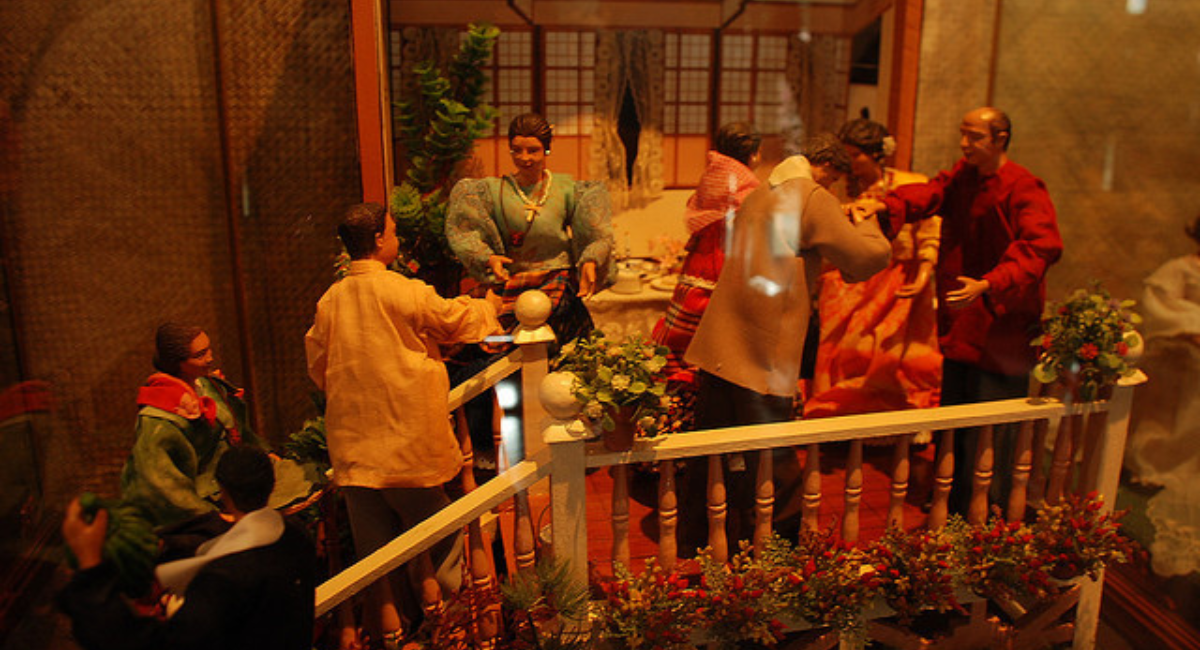Growing up, you may have listened to stories about how your Lolo (grandfather) courted your Lola (grandmother) by singing songs outside her window, in the typical harana (serenade) style. To get her parents’ approval, your Lolo may have had to chop wood, carry sacks of rice, and accomplish other tasks as part of paninilbihan (service). These are just two of the Filipino courtship practices done many, many years ago.
These days, courtship and wedding practices have changed with the times, especially with the advent of technology. Instead of engaging in harana and paninilbihan, men and women today exchange emails, tests, and go on dates. Still, there are some Filipino traditions that have

1. Pamamanhikan (Engagement)
Pamamanhikan happens when the would-be groom and his family visit the would-be bride and her family, to formally ask for her hand in marriage. Upon acceptance of the proposal, the families proceed to talk about the wedding -- discussing possible dates, venues, and other details.
Notably, the term pamamanhikan is derived from the word panhik (climb). This could be because in the past, most Philippine houses featured a flight of stairs to the entrance. Hence, visitors literally had to “go up” before entering the house.
2. Pa-alam (Announcement)
As soon as a date is set, the couple visits their families and friends to formally invite them to the wedding. They also inform their chosen Ninongs and Ninangs (godparents) about the event, handing out wedding invitations and bearing gifts (e.g. fruit baskets) as well. All of this is part of the pa-alam (announcement) stage.
3. Pagmamano (Blessing)
During the wedding ceremony, there is a part where the couple takes the hand of their parents (and future parents-in-law) and touches it to their forehead. This is called pagmamano, which is a gesture of respect. It also symbolizes the granting of parental blessings to the couple.
4. Ceremonial Items
Most Filipino weddings include certain items during the ceremony. Aside from the wedding rings, there is the arrhae (pieces of gold or silver coins), which symbolize the groom’s dedication to becoming a “good provider;” the unity candle, which signifies the joining of two families; the veil, which symbolizes the clothing of the bride and groom as one; and the cord, which is a symbol of everlasting commitment. In Catholic and Protestant weddings, a copy of the Bible is also entrusted to the couple, signifying their faith and devotion.
5. Handaan (Feast)
Of course, a Filipino wedding would not be complete without a handaan (feast)! Tables are laid with classic Pinoy food favorites, such as adobo (marinated pork or chicken), pancit (noodles), caldereta (beef stew), and lechon (roasted pig). For dessert, colorful trays of kakanin (rice cakes) like puto (steamed rice cake), biko (rice cake with coconut and sugar), and sapin-sapin (three-layered rice pudding) are also served to the guests.
6. Money Dance
This is similar to the Western tradition of the newlywed couple’s “first dance” – but with a twist. As the bride and groom dance, guests would come forward to pin paper bills on their clothes. These are monetary gifts that are meant to help the couple start on their new life together.
Indeed, the times may have changed, but certain traditions remain. In the case of Filipino weddings, the pamamanhikan, pa-alam, pagmamano, ceremonial items, handaan, and money dance are some practices that are still observed by many couples today. Over the years, these traditions continue to reflect the beauty and uniqueness of the Philippine culture.